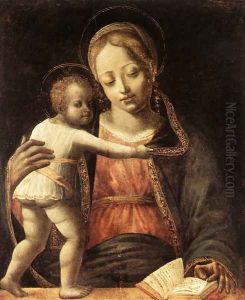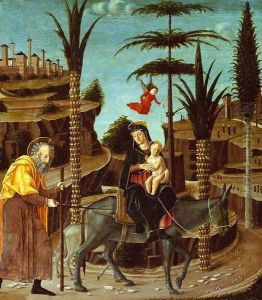Bernardino Jacopi Butinone Paintings
Bernardino Jacopi Butinone, also known as Bernardino de' Conti, was an Italian painter of the Renaissance period, active mainly in Lombardy. Born around 1436, Butinone's exact birthplace is not well documented, but he is believed to have been from Treviglio or possibly Milan. He worked extensively with Bernardino Zenale, with whom he shared a workshop, and their artistic partnership was a significant one, blending the styles of the Lombard and Venetian traditions.
Butinone initially trained under a painter named Stefano de Fedeli, as indicated by documents from the time, and his early works reflect the influence of his master. However, he soon developed his own distinctive style that combined a keen observation of nature with a delicate sense of color and composition, which was quite unique for his time.
Throughout his career, Butinone was commissioned to create a number of significant works, particularly altarpieces and frescoes for churches. One of his major works is the 'Chapel of St. Martin' in the church of San Pietro in Gessate in Milan, which he frescoed with scenes from the life of St. Martin in collaboration with Zenale. He also worked on the frescoes of the Grifi Chapel in the same church, which depict the life of the Virgin Mary.
Butinone's style is marked by his narrative clarity and attention to detail, which often included the use of symbols to add layers of meaning to his compositions. His figures are rendered with solidity and volume, showing the influence of the sculptural style that characterized much of Renaissance art.
Despite his considerable talent and contributions to the Lombard style of painting, Butinone's work was somewhat overshadowed by the achievements of his contemporaries, such as Leonardo da Vinci, who were working in the same region. Nevertheless, his paintings are considered important in the study of Northern Italian Renaissance art for their blend of local traditions with the innovations of the time.
The date of Butinone’s death is as uncertain as that of his birth, but it is believed that he died around 1507. His legacy lives on in the works that remain and in the stylistic influence he had on other artists in the region.

